As the famous Baz Luhrmann song says, attempting to develop and take a product to market without sufficient testing is “Like trying to answer an algebra question by chewing bubble gum.“
It’s not big, certainly not clever, and will cause no end of problems.
In fact, one of the most frequent reasons that most startups fail is that there simply isn’t a market for their product. When little, if any, product research is carried out, and the team makes the stats fit the desired outcome… well, we all know how that goes. Accurate research is a solid foundation to build on.

What counts as a product research tool?
Product research tools can vary in type but typically fall into a few broad areas. The best product search tools are survey software, customer feedback gathering and recording, usability testing, and A/B testing solutions. This isn’t exhaustive, but product research software and tools will always gather information to make informed decisions about users and the market overall.
Whatever the data collection method, ultimately, all you need to know is the following:
Thorough Product Research = Good!!!
Winging It = Bad 😢😢😢😢
So, rather than beat around the bush, here is the ULTIMATE list of product research tools to ensure you have ALL the information to make good decisions.

Disclaimer: These will only help you make good product research decisions. Your own personal decision-making… well, that’s your dumpster fire. Own that shiz!
Product Research Tools To ❤️❤️❤️
tl;dv
You can make all the excellent decisions and get all the exciting product research answers, but if you’re not documenting them properly, you are screwed.
Accurate documentation on product research is key.
When collecting research, it needs to be available to all stakeholders in a way that displays clearly defined research objectives, methods, and outcomes. And this includes the voice of the customer.
To get into the mindset of your intended target groups and users, you will have to speak to them directly. Interviews are key in every stage of the product management cycle and are the most critical source of insights. From interviews, you can build an accurate picture of who your users are, develop personas and hear what their real pains and frustrations are.

So you could scrawl on a notepad or try and set up a dictaphone. But let’s be honest. Those will either not work, get lost, or be incredibly biased.
You need a whizzy, automatically done, modern way to document, and tl;dv is it.
tl;dv, as product research software, can capture and record your meetings on Google Meet, Zoom, or MS Teams while also transcribing them at the same time. This means that every little thing is captured, and you can highlight key moments:
- When a user expresses a paint point
- Their motives and reservations
- Overall impressions of the product
- Snapshots of their worldview
Video and transcription, held in a central database for easy reference, means you can return to them anytime for analysis. And equally important, share with your stakeholders. You can easily integrate the clips into platforms such as Slack and Notion, as well as 5,000+ other work tools!
Other cool features include tools for timestamping, tagging, and clipping important snippets without the need for video editing software. You can search the whole database by keyword as well.
The platform is totally geared up to allow you to pinpoint, archive, and share the most significant insights from your interviews with users or target audiences.
No more wasting time scribbling, deciphering, or even trying to find written notes. The workload can easily be shared among different people, AND it also reduces the chance of unconscious bias.
It starts with a free pricing tier, going up to $19 per month/per user for the Pro version.
THEY SAY:
“A tool that should be on everyone’s toolbelt” G2 Reviewer
Make My Persona
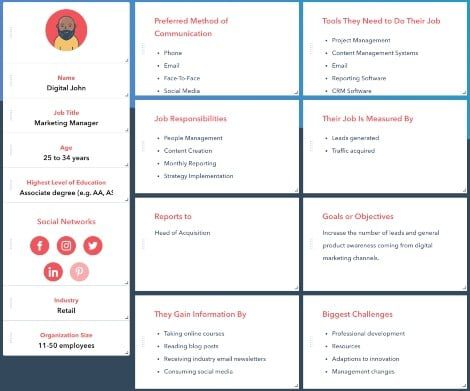
One of the most important but overlooked, areas of product research is your customers.
This is the area where bias can really mess with the outcome, and having assumptions can doom teams right from the start.
Make My Persona is a totally FREE tool from HubSpot that allows you to build, create, and flesh out your buyer personas. Everything from their name, age, responsibilities, tools that they need to do their jobs, and more. While sometimes we can have an idea in our head about personas, making them more concrete can start to reveal things. Not the least, what our colleagues assume about our audience that we may not realize or may be inaccurate.
This means, as well as being able to really get an idea of who you are creating for and test whether your ideas are right. This early identification means that you can find out any problems, flaws, or oversights really early in the process.
THEY SAY:
“I hear a lot that User Research is important, but only this tool motivates me to move data from my head into a resource that can be shared with other team members. I like it. Easy to use.” Reviewer on ProductHunt
Hotjar
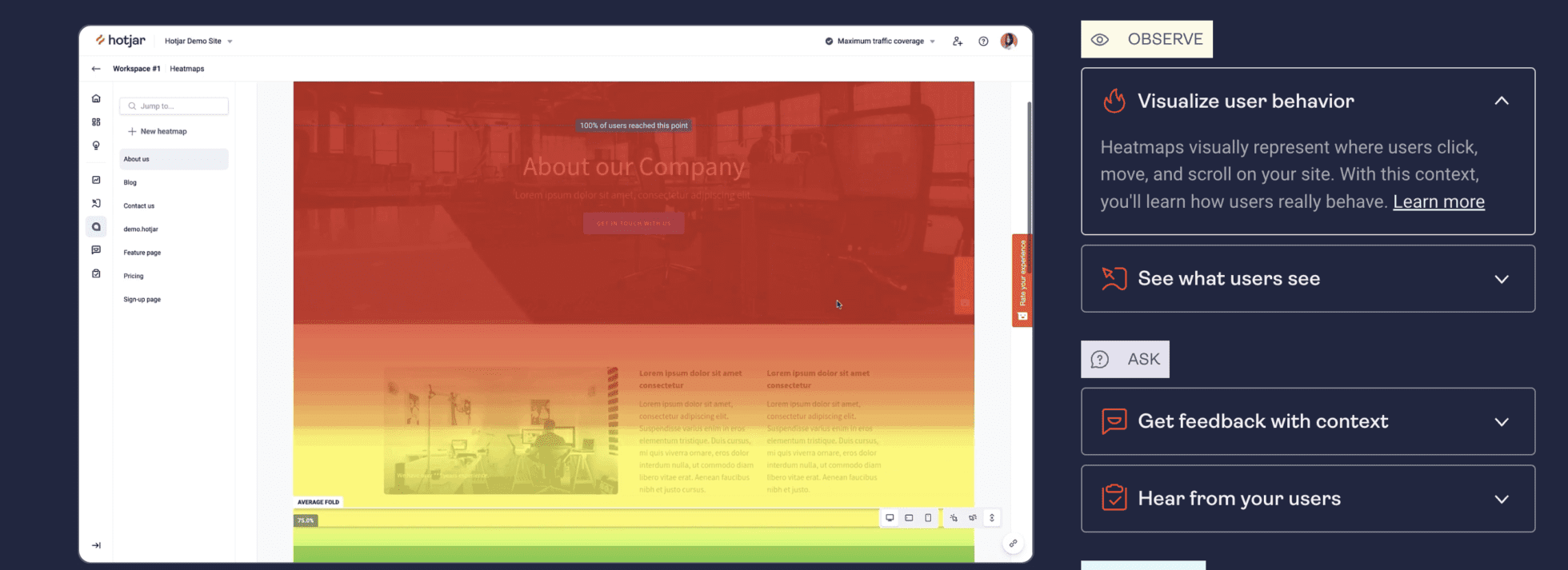
You would be shocked at how many tools, apps, products, and more suffer from bad design. You would be even more shocked to see how few teams actually do anything about it.
Hotjar is a heat mapping software that can help to show all those moth holes in your design. While you may absolutely love that neon pink text on an electric blue background, HotJar’s tracking shows people can’t actually see what they are reading and become disorientated.
For every time you’ve sworn at a mobile app that won’t let you “click the thing!!!!” a heat mapping tool could have fixed that.
Don’t be the product that has people throwing their devices at walls in frustration. Do the research and testing to make sure the icky bad bits you’re missing don’t cost you.
Hotjar’s premium features are no longer able to be seen on their website, but they do offer a free plan that’ll get you started.
THEY SAY:
“Best User Behavior Understanding Platform” G2 Reviewer
UXTweak
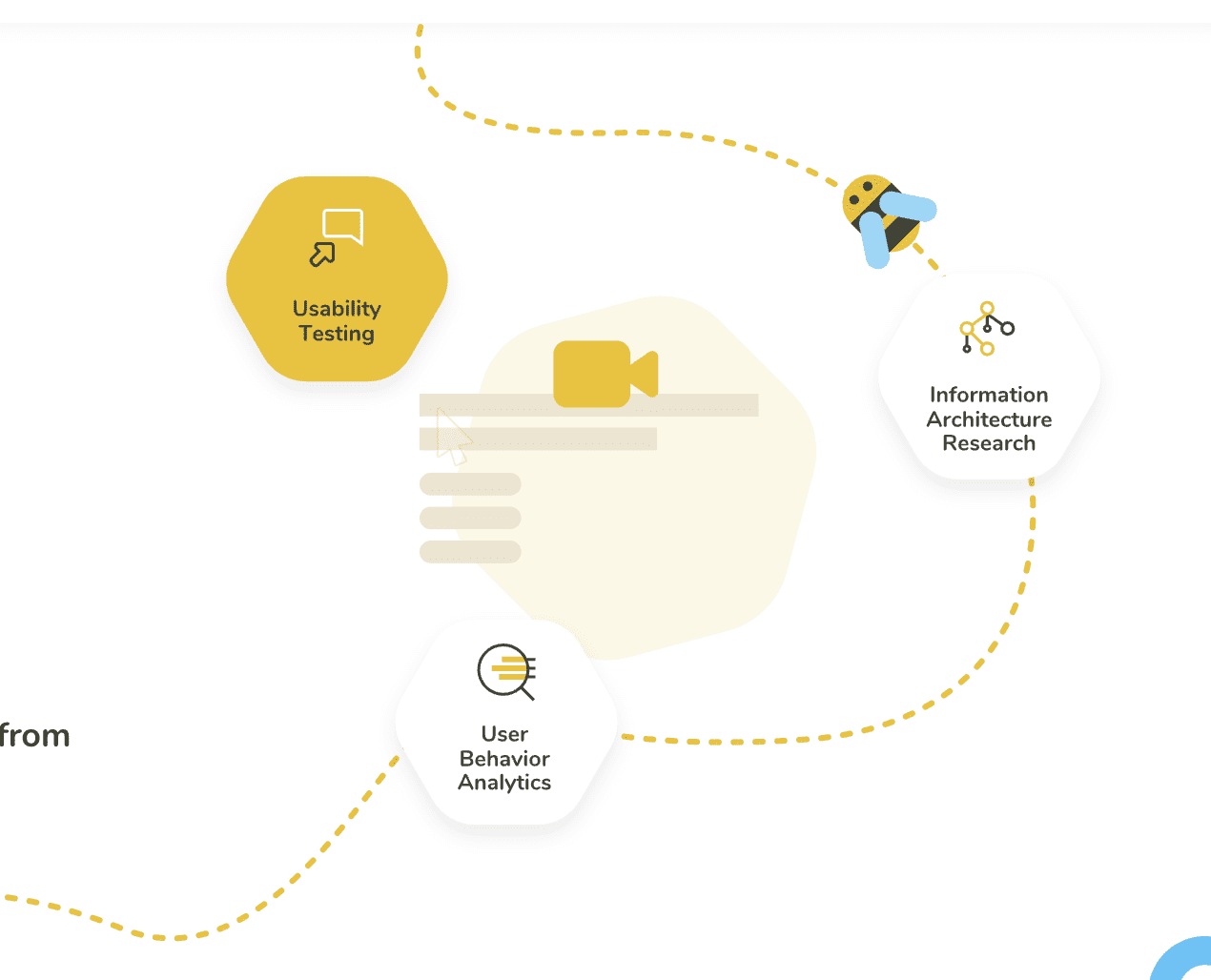
This clever little tool can take those pretty designs you’ve created in Figma and really put them to the test. You can create interactive testing scenarios to see if people can use designs intuitively and track their behavior to get deeper insights into how users interact with your product.
UXTweak uses heat mapping, click tracking, and pre-loaded outcomes to judge whether or not your prototypes are a success or need to go back to the drawing board. What’s more, is that UXTweak can also help get you the participants too.
There are three options:
- Create your prototype and then share the link out to who you wish to test the product
- Create an interactive testing group with your own website visitors and customers
- Leverage UXTweak’s user panel to get feedback from qualified users
It starts with a free plan for one user and one active study, increasing to 153€ / month, billed annually for one license. Discounts are available for multiple licenses.
THEY SAY:
“UX tool to redesign/built websites to be truly user-centered” G2 Reviewer
Productboard
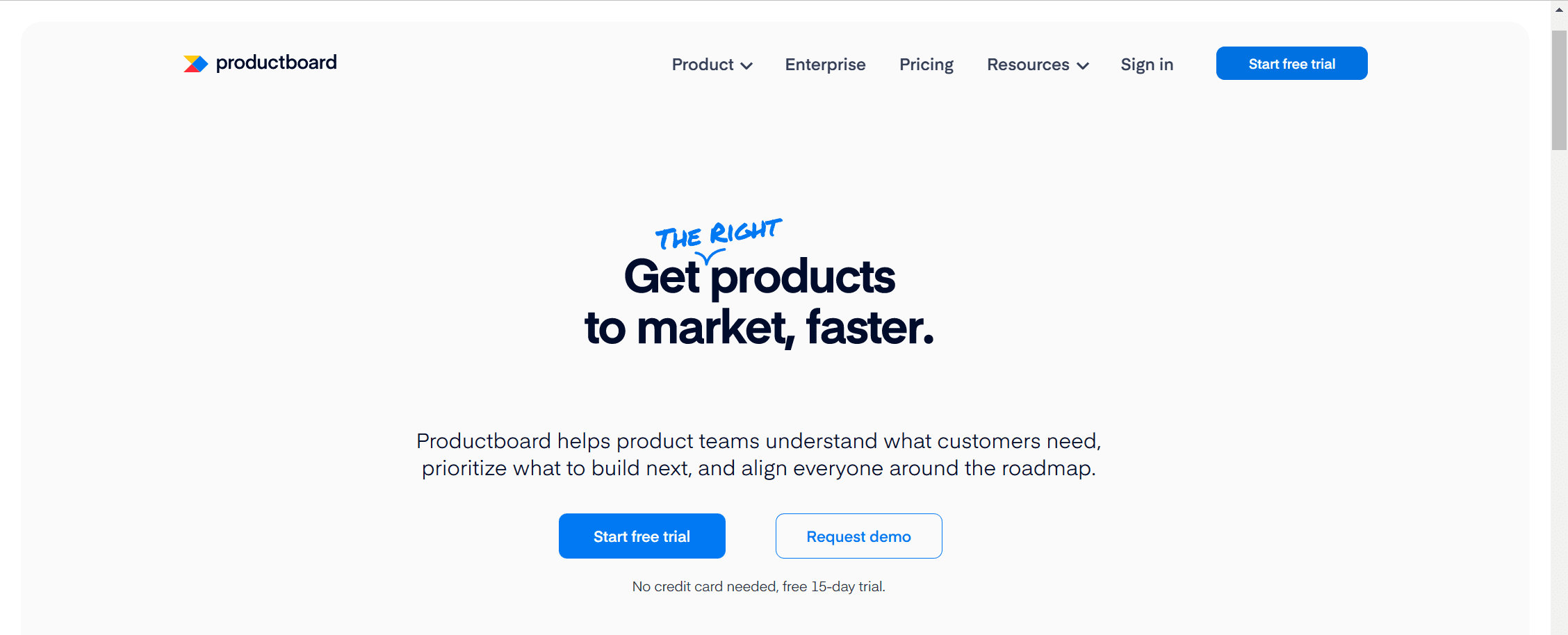
Productboard is one of the most powerful product management tools on the market.
It helps you stay on top of what’s being released and when and view customer feedback in an easy-to-digest format.
In Productboard’s own words:
“Productboard helps product teams understand what customers need, prioritize what to build next, and align everyone around the roadmap.”
While we have some FEELINGS about roadmaps, everybody in product research needs a plan. By having a plan and clear objectives, which are easily documented for all those involved, conducting research is more straightforward. Product Board, as a product research tool, helps teams stay organized while they make decisions that support their product strategy.
It’s available in several versions, Essential, Pro, Scale and Enterprise. Prices range from $20 – $80 per maker/month depending on your purchase plan. The B2B plans, Scale and Enterprise are price on request.
THEY SAY:
“Productboard is an Awesome Addition to any Agile Workflow” G2 Reviewer
Airtable
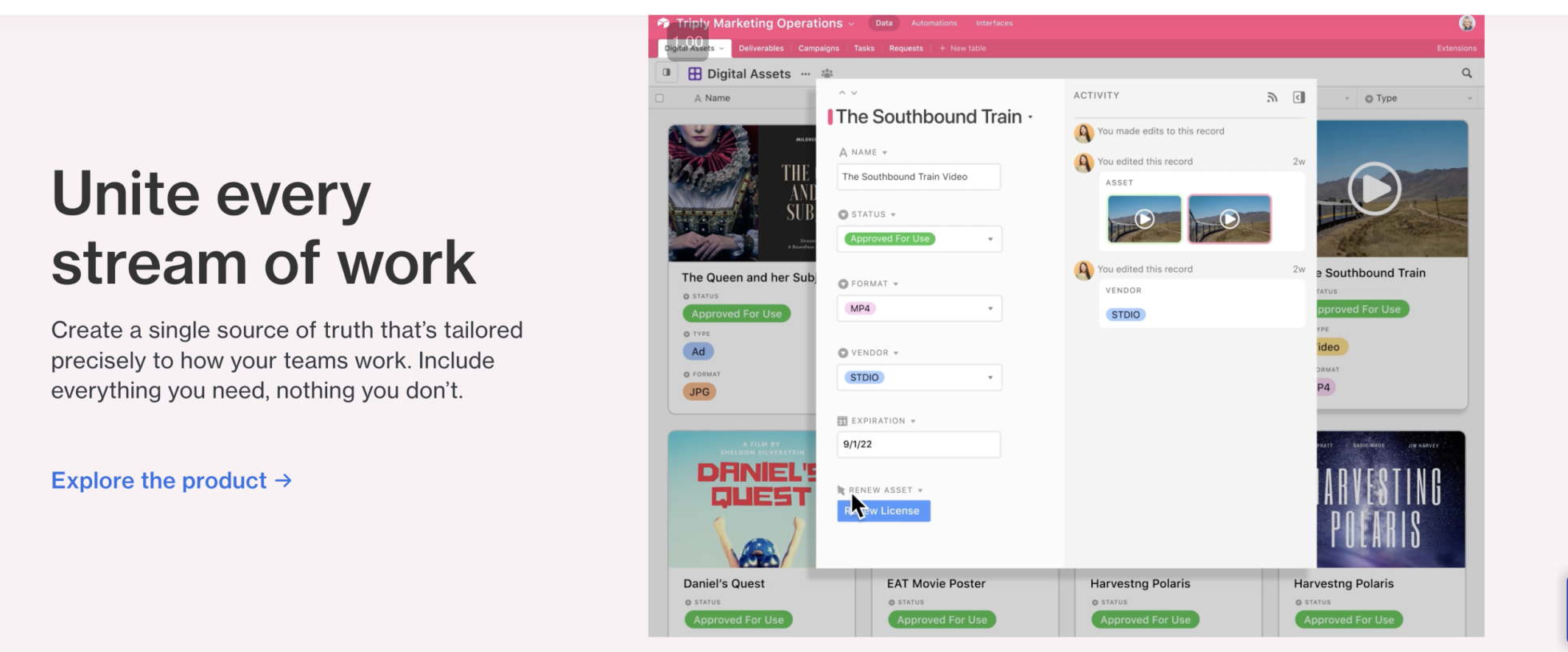
Lots and lots of research is great! The more you know about your audience, concept, product, and market, the stronger your offering will be.
But as the sheer amount of information you hold increases, so does the challenge of keeping it structured. Different members of the Product and wider team, need to do different things, which requires different types of information.
This is cool if it’s all well organized, nice and neat, for everybody to use. But this is hard to achieve.
Airtable is, for want of a better term, the perfect Product research housekeeper. All your information can be fed into Airtable and kept organized. With a straightforward, transparent and easy-to-manage view, it’s easy to identify true insights and make sure that all angles are covered.
Consider it the Marie Kondo of Product. It’ll give you the insights that you need, while also making it incredibly easy to work out what’s not relevant to the big picture.
Airtable allows you to do things like create a repository of user feedback. You can also make sure that the feedback is directed to the right place, team, people, or initiative. This means that everybody that needs to be in the loop is. Nobody is dropping the ball because it’s all clear to see.
There’s also dynamic scoring for features, that tallies up what your customer base is saying and gives you data-driven proof of what to work to next.
Airtable also integrates with Slack, Salesforce, Gmail, Zendesk, and more, making it super easy to bring into your team’s digital ecosystem.
Airtable starts at a free tier for individuals, leveling up to $20 per user/month for Team, and $45 per user/month for Business.
THEY SAY:
“Airtable – Spreadsheets on steroids” G2 Reviewer
Proto.io

Prototyping is an essential step in the user research cycle. By building and creating prototypes, you ensure that your ideas are valid and workable.
There is then a solid case for this can be done, and you can proceed more confidently with your business concept. Having a prototype also gives something tangible that people can comment on. You are able to get feedback from a “thing” rather than an abstract concept.
That’s why Proto.io is so cool, It’s a platform for creating high-fidelity prototypes that look and feel like the real thing.
With Proto.io, you can design, develop, test, and share your mobile or web app prototype quickly and easily.
With no coding required, you can create complex interactive prototypes in just a few clicks. It also has tools to help teams collaborate effectively with commenting tools, review boards, notifications, and more.
Proto.io starts at $24 per month for their basic Freelancer package (1 user), although you may need their Startup Plan ($40/month) if you have larger projects requiring more advanced features like unlimited users and custom branding. There are other scaled up tiers such as Agency ($80/month) and Corporate ($160/month). These are all charged annually.
THEY SAY:
“Easily and quickly create a prototype and publish it.” G2 Reviewer
Canny
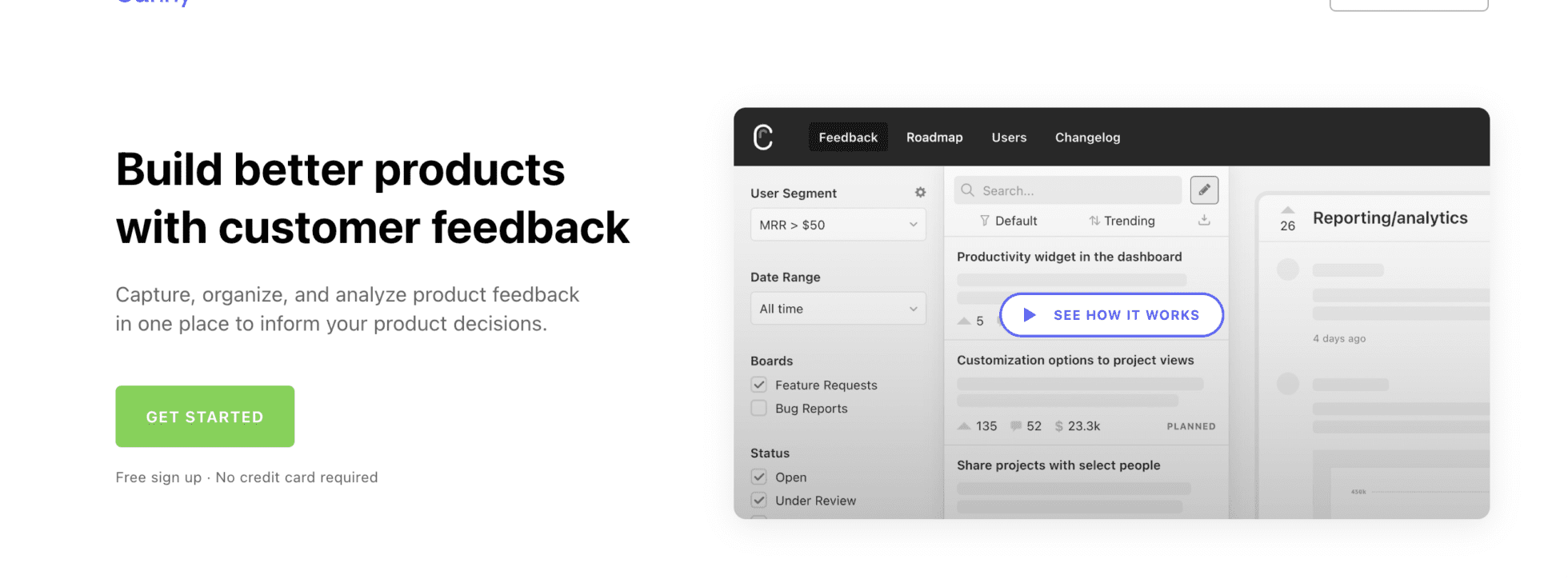
Canny is a customer feedback platform that helps you better understand your target audience.
Goodness knows how chaotic trying to manage Product can be at times. This tool allows you to collect feedback, group things together automatically, to inform your team and overall product strategy. Then it provides you with all the data and details to help align your internal teams.
All you need to do create a link to Canny within your product, and then users can provide feedback with minimal resistance.
As the data comes in, the system aggregates it together and builds up a solid picture of customers pains, wishes, feelings, and gives you a super clear strategy of where to go next. It also brings information in from Slack, Sasleforce, HubSpot, Intercom, and more,
As well as clever customer segmentation, when you roll out a new feature you can alert everybody that requested it as well. Closing that all-important loop between product research and outcome for users.
Starting with a free tier, you’ll get to try out all the basic features. The Starter plan costs $79/month while the Growth plan will set you back $359/ month. There’s also a Business option for those looking for more flexibility.
THEY SAY:
“One of the best feedback gathering tool.” G2 Reviewer
Sprig

Sprig is a powerful tool that allows you to gain customer insights asynchronously. It helps you collect feedback from users and turn it into actionable insights. Sprig can also provide access to various analysis tools like sentiment analysis and Net Promoter Score (NPS) insights.
While the toll collects data and analytics, it promotes itself as a way to elevate the user experience. No more “the data said this,” but the output doesn’t match up.
Sprig takes things like surveys but gives them context. It allows you to leverage in-product surveys to better understand how customers are responding to your new features and get insights that numbers can’t reveal.

The tool also allows for prototyping and design testing. With interactive prototypes, concept testing, and more, it all feeds into a centralized data bank for easy access, reference, and discussion. Even better, it integrates with 12 of the top design tools.
The platform’s surveys are also highly customizable and can be used to create short surveys, polls, or even personalized conversations. Sprig integrates with other popular platforms such as Slack, Google Suite, and Intercom for easy data sharing.
There is a free plan, and paid-for prices start at $175 per month for the basic plan when billed annually.
THEY SAY:
“A powerful tool to get customer insights async” G2 Review
Notion
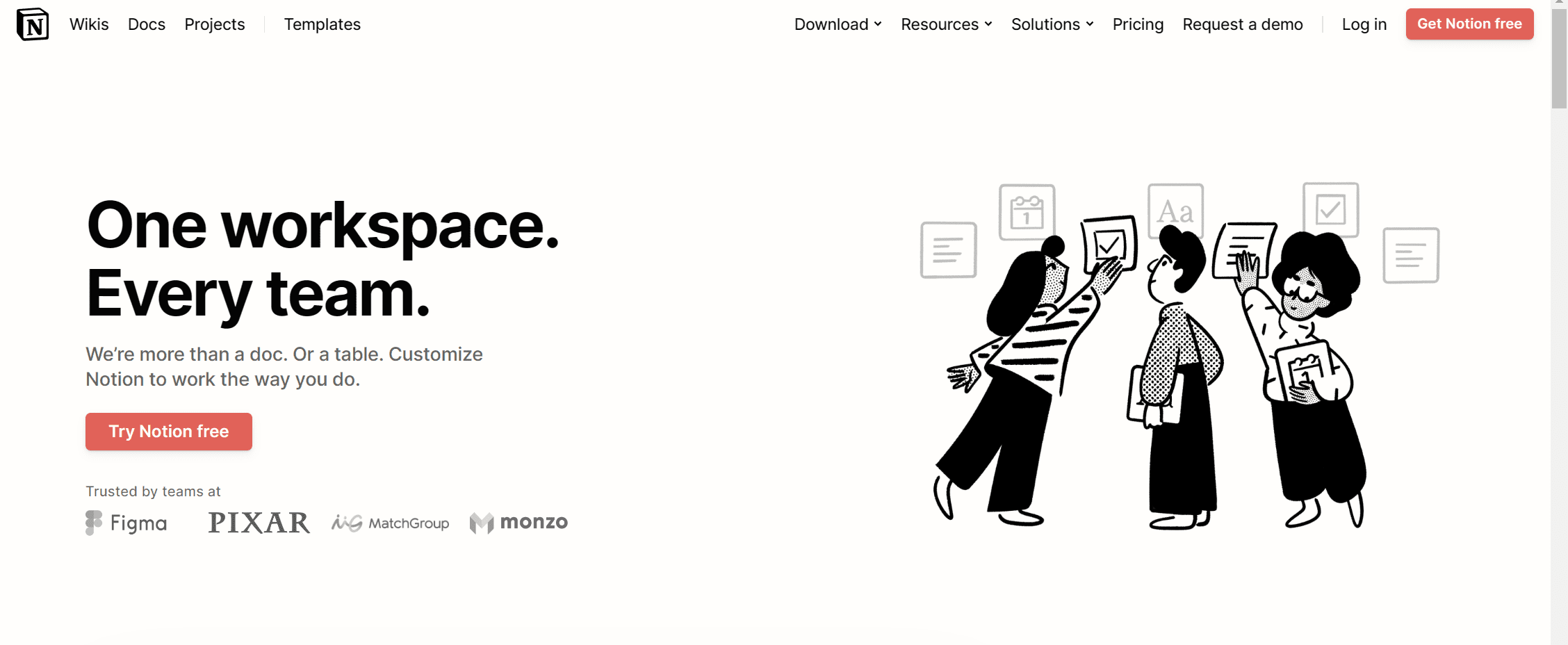
Notion is a pretty special tool that doesn’t just count in the product research tool space. Notion is a knowledge base, an all-in-one workspace platform. It allows users to store and organize everything from notes to project management tools in one place.
For anybody that works in product research, then being able to easily access all that data and update it with ease is key. And Notion is an incredibly intuitive, low-buy-in tool compared to other product-based CRM options.
The coolest thing about Notion is that it’s highly customizable. You can create a branded page with tasks and timelines alongside your marketing materials, design documents, customer feedback, etc. Plus, the platform lets you update information in real-time and even integrate with other platforms like Slack.
While it may not actively be a customer or client-facing tool, as a repository to keep all information together in a way that fits your business and Product management structure, it’s amazing.
Why pay out lots of money for a system that doesn’t quite fit when you can customize your own?
What’s more, Notion has rolled out its very own GPT driven “Ask AI,” which is incredibly useful for helping inspire the product research cycle, but it can also integrate directly with tools such as tl;dv.
This means your user research interviews, highlights, and more can be automagically integrated into Notion for all stakeholders and the wider team. This removes many barriers and democratizes the process with a secondary, easy-to-use, accessible platform that keeps all the data and insights together.
The pricing of Notion is pretty good as well, with a free plan that allows for unlimited collaborators and a paid plan that starts at $8 per user/month, going up to $15 per user/month for Business. It’s one of the most affordable product research tools with an easy-to-use interface, great features, and many integrations. The new AI add-on is $8 per member/month, billed annually—or $10 per member/month for monthly billing.
THEY SAY:
“Powerful collaboration tool for product development teams” G2 Reviewer
Product Research Tools FTW!
Product research can be a laborious process that NEEDS to be done, but it really doesn’t have to be complicated.
So many great tools are available that make the process easier and more efficient.
Sprig is a great tool for data collection and analytics. At the same time, Notion is perfect for creating a customizable knowledge base that teams of all sizes can use to store and organize information. For prototyping, you have a massive range of options, including Figma, Proto.io, and Sprig again.
And finally, you can bring all of this to life and get real-live, actionable feedback and sentiment from your users.
Implementing tl;dv, not only to help collect user interviews and feedback to share but also for your internal meetings, can be a game changer. There will never be another lost comment. Everything is documented and searchable, adding all the proof-of-concept and qualitative insight to make your products successful.
Remember, Proper Planning and Preparation Prevents Piss Poor Performance. Proper product research is the difference between launching the next iPhone or Netflix and Atari’s ET Game and the Zune player.





